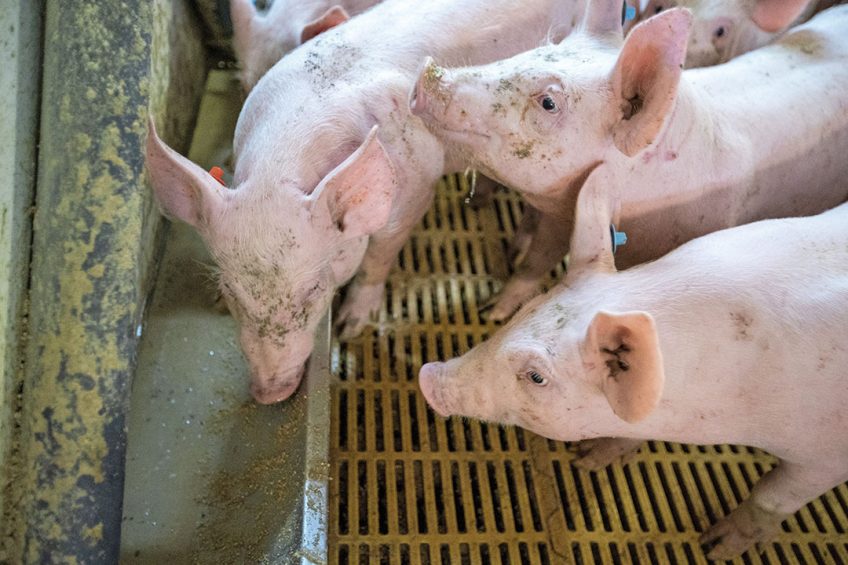MCFAs and their derivatives: New potential for gut wellness

The industry is investigating different types of alternatives for the use of antibiotics. One of these promising alternatives are medium chain fatty acids (MCFAs) and their derivatives. Studies showed that animals’ microbiota could be improved by adding MCFAs to an animals diet.
Antibiotic growth promoters, or AGPs, have driven high productivity and efficiency in modern livestock production by successfully targeting a certain spectrum of bacteria. However, high dependency on AGPs generates major disease control risks for both livestock and human health. Since the 2006 European Union AGP ban, withdrawing AGP from routine production and finding alternatives has become a worldwide target for sustainable industry development. AGP withdrawal significantly increases the incidence of certain diseases, dramatically influencing animal growth performance and efficiency. Today, researching optimal alternatives is an industry priority.
Many different feed additives such as probiotics, prebiotics, plant extracts, yeasts, and organic acids have been studied as part of the feed additive alternative programme. Within organic acids, medium chain fatty acids (MCFAs) and their derivatives are known for their strong antimicrobial properties, especially against gram positive bacteria.
MCFAs are saturated carboxylic acids, from C6 to C12, and are found in coconut oil and palm kernel oil in the form of triglycerides. Since many products containing MCFAs and their derivatives are available on the market, extensive studies have been carried out to assess the real benefits to animals. A study showed that sow excreta microbiota could be improved – thus improving piglet performance – by adding a blend of organic acids and MCFAs to a sow’s diet. Similarly, another study demonstrated that supplementation with these blends has positive effects on the faecal microbiota composition, immune response and growth performance of broilers.
Antimicrobial effect: Fatty acid vs Monoglyceride
The antimicrobial activity of MCFAs has been studied extensively since it was first discovered in human mother milk. Although the components in mother milk are not naturally antimicrobial, once the triglycerides in milk are digested in the gastrointestinal tract they free fatty acids and monoglycerides generating antimicrobial activity. MCFAs have been widely studied in the form of free fatty acids and monoglycerides to determine their antibacterial activities in vitro. Lauric acid (LA) is considered a potent MCFA with multiple antimicrobial (including antibacterial, antifungal and antiviral) activities. The most commonly-known antimicrobial mode of action of MCFAs and their derivatives is disrupting the bacterial cell membrane, thus inhibiting bacterial growth. The glycerol backbone in monoglyceride lauric acid (GML) appears to grant stronger hydrophilic properties than its fatty acid form which shows a lower minimum inhibition concentration (MIC) against some gram positive bacteria in vitro, such as Streptococcus. However, this is not the case for every gram positive bacteria. This same study shows that LA and GML have an equal inhibition concentration of C. diphteriae, while LA has a stronger inhibitory activity against L. monocytogenes (both C. diphteriae and L. monocytogenes are gram positive bacteria that cause disease in humans). Another study found that GML and LA have identical inhibitory activity against Staphylococcus aureus. Lauric acid is thought to be partially responsible for the inhibitory activity of GML against S. aures. They also found that similar concentrations of LA and GML suppress the induction of β-lactamase activity and block the expression of toxic shock syndrome toxin 1 (TSST-1) from S. aureus. Furthermore, LA and GML appear to produce a synergistic effect against Streptococcus pyogenes at different mixture ratios: the combination exhibits stronger inhibitory activities than either single ingredient (LA:GML=2:1, MIC: 20µg/ml; LA, MIC: 120µg/ml; GML, MIC: 30µg/ml). Both LA and GML demonstrate anti-viral properties against different enveloped viruses.
Mitigating pathogens in feed
Based on in vitro antimicrobial findings, we can use organic acids as feed preservatives, and also as the first barrier for pathogen infection via the oral route.
Feed biosecurity awareness has grown steadily in recent years. Studies show that while animal by-product feed materials represent a major viral transmission risk, so do plant-based feed materials, especially soy-based ingredients. Today’s livestock industry depends heavily on global trading in raw materials, increasing the chances for viral transmission from continent to continent. Since the 2013 outbreak of porcine epidemic diarrhoea virus (PEDv) in the US, further investigations have shown that contaminated feed and feed ingredients are potential sources of epidemics. A collaborative study led by Dr Scott Dee from Pipestone Applied Research, Dr Megan C. Niederwerder at Kansas State University, Dr Aaron Singrey and Dr Eric Nelson at South Dakota State University – and with the participation of Pancosma / ADM—shows that MCFAs are potential agents for mitigating transmission of porcine reproductive and respiratory syndrome virus (PRRSv), PEDv and Senecavirus A (SVA) to piglets from contaminated feed. MCFAs also helped challenged piglets significantly improve their average daily gain.
Gut morphology and immune modulation
MCFAs and their derivatives not only modulate gut microflora by reducing unwanted pathogenic bacteria, also demonstrate an influence on gut morphology. A study shows that MCFA supplementation to young piglets resulted in longer villi in the small intestine with a lower crypt depth. MCFAs also demonstrate a role in immune modulation, especially during inflammation. Also a study shows that adding MCFA triglycerides to rat feed helps protect their intestine by increasing IgA secretion and modulating the inflammatory immune response when challenged with endotoxin, LPS. They also found that MCFA supplementation to miniature pigs challenged with cyclophosphamide helped reduce intestinal inflammation and oxidative stress while strengthening the gut barrier function.
The hidden cost
Pathogenic challenge in animals generates high costs in terms of protein and energy. It has been roughly quantified that the lysine cost of the innate and acquired immune response was equal to a loss of 0.031 g average daily gain per kg bodyweight. Subclinical infection, if underestimated and neglected, can impact animals’ overall growth performance. Research shows that performance drops when AGPs are removed from their diet (WHO, 2003), because the incidence of disease is likely to increase, and animals require more protein and energy to deal with pathogens. Enhancing animal performance while using fewer antibiotics on farm requires a comprehensive strategy, from biosecurity to feed hygiene. Animal gut wellness is crucial for growth, building up resilience to disease and focusing energy on better development. MCFAs and their derivatives play a key role in the AGP alternative solution. They function not only as what used to be known as an antimicrobial ingredient, but have other potential properties that promote animal wellness such as improving gut morphology, enhancing immune response and mitigating pathogens in feed.
Pancosma, a brand of ADM, makes no representation or warranty, whether expressed or implied, as to the accuracy, reliability, or completeness of the information, nor does it assume any legal liability, whether direct or indirect, for any information. Use of this information shall be at your discretion and risk. Nothing herein relieves you from your obligation to comply with all applicable laws and regulations and to observe all third-party rights. The uses and claims for ADM’s products should be adapted to the current local/ regional regulatory environment. This information does not imply any express recommendations for the cure, mitigation, treatment, or prevention of disease.









